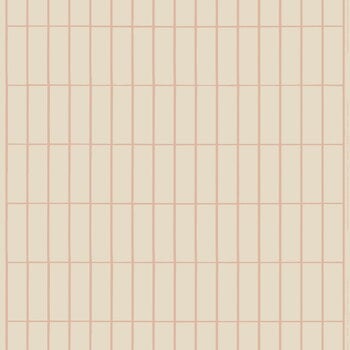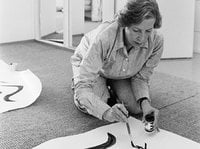Marimekko’s Tiiliskivi fabric cover features a simple, linen and peach-coloured grid pattern from 1952. Did you know that the classic Marimekko print was designed by the company’s founder, Armi Ratia?
Made of a cotton-linen blend with 48% recycled cotton, 31% organic cotton, and 21% recycled linen, the fabric is printed in Helsinki, Finland. Please note that in a cotton-linen fabric, the print dye is absorbed in the fabric differently than in a 100% cotton fabric – the surface, therefore, feels a little harder.





